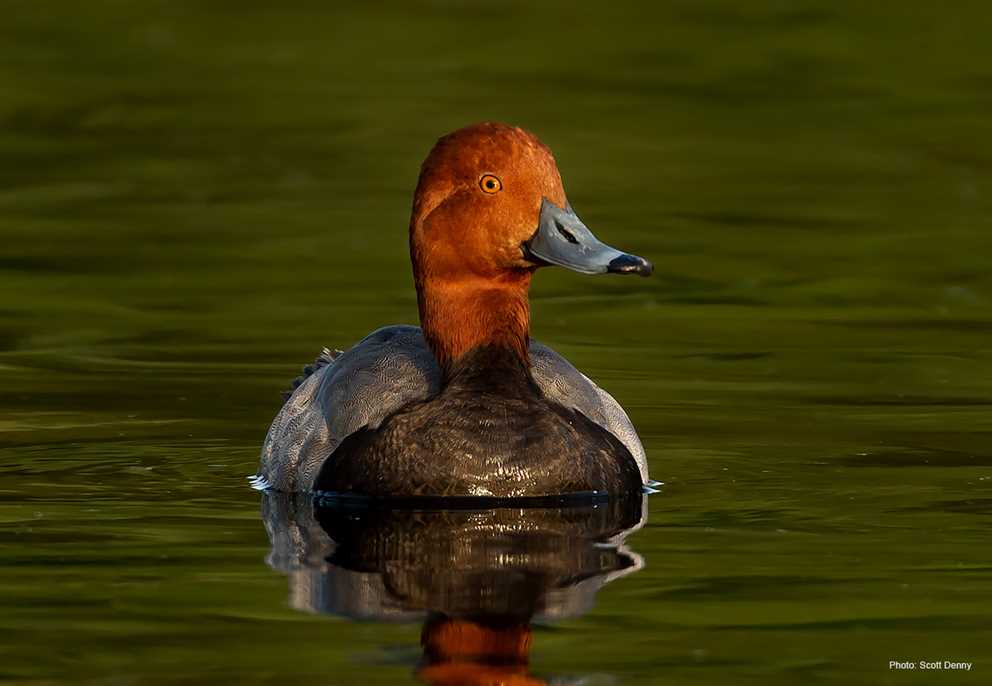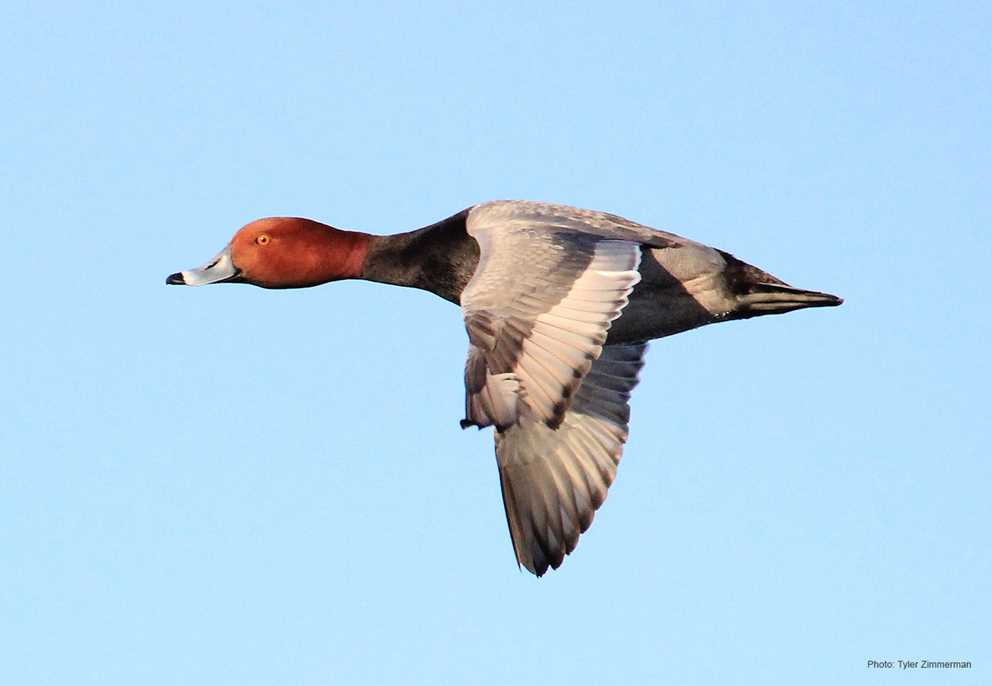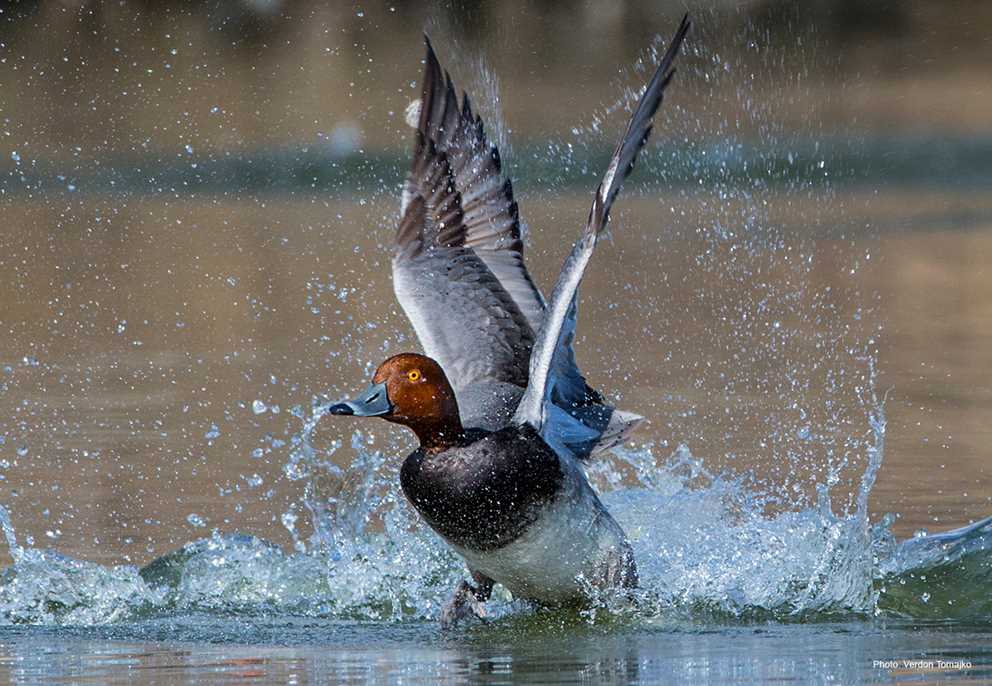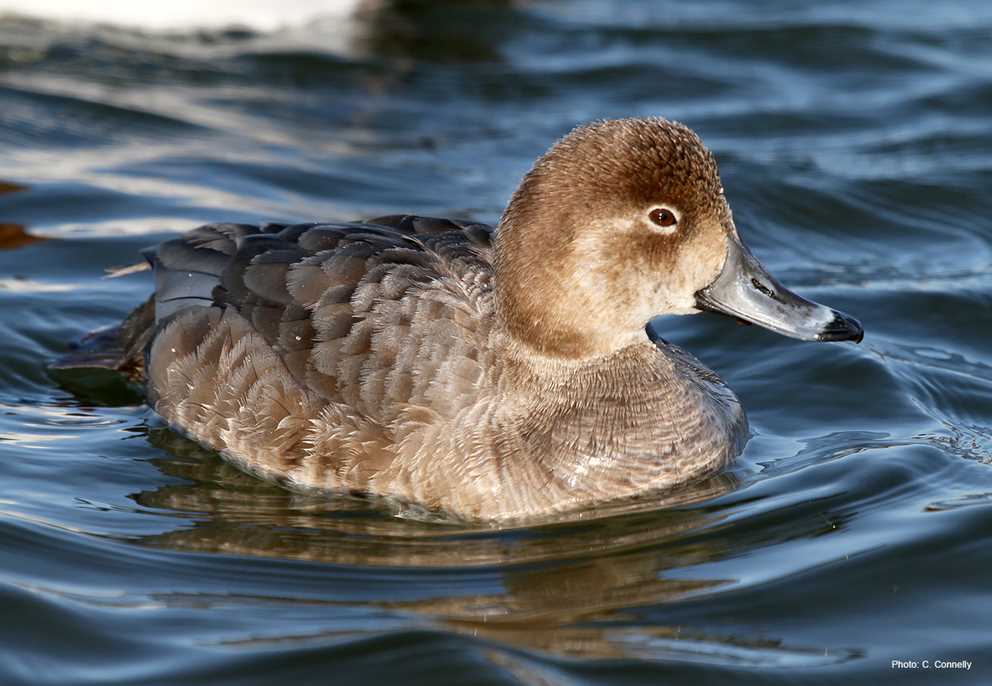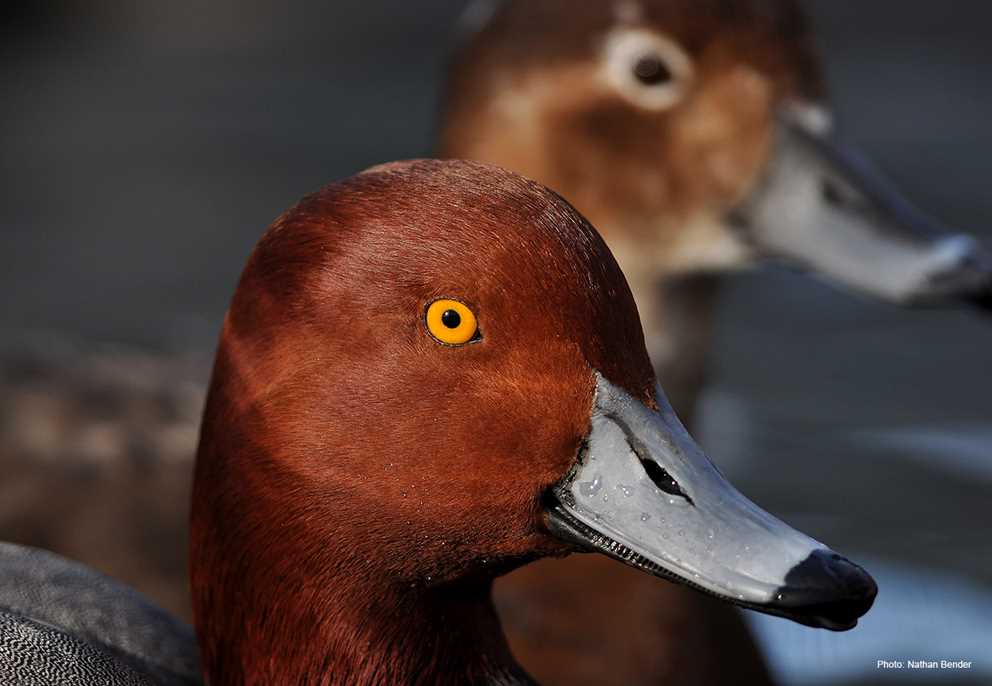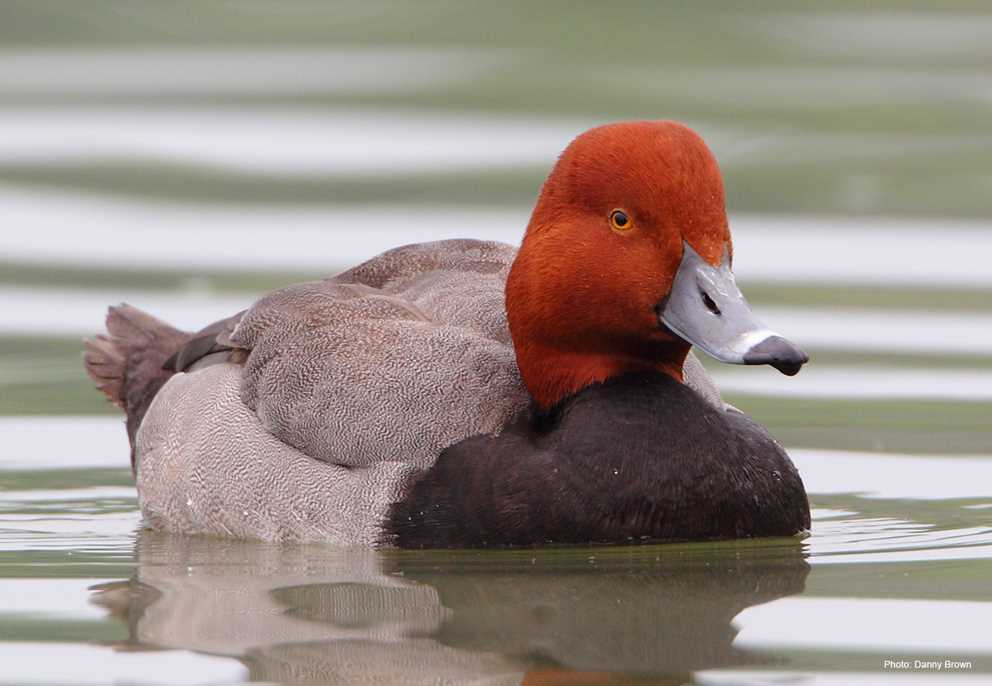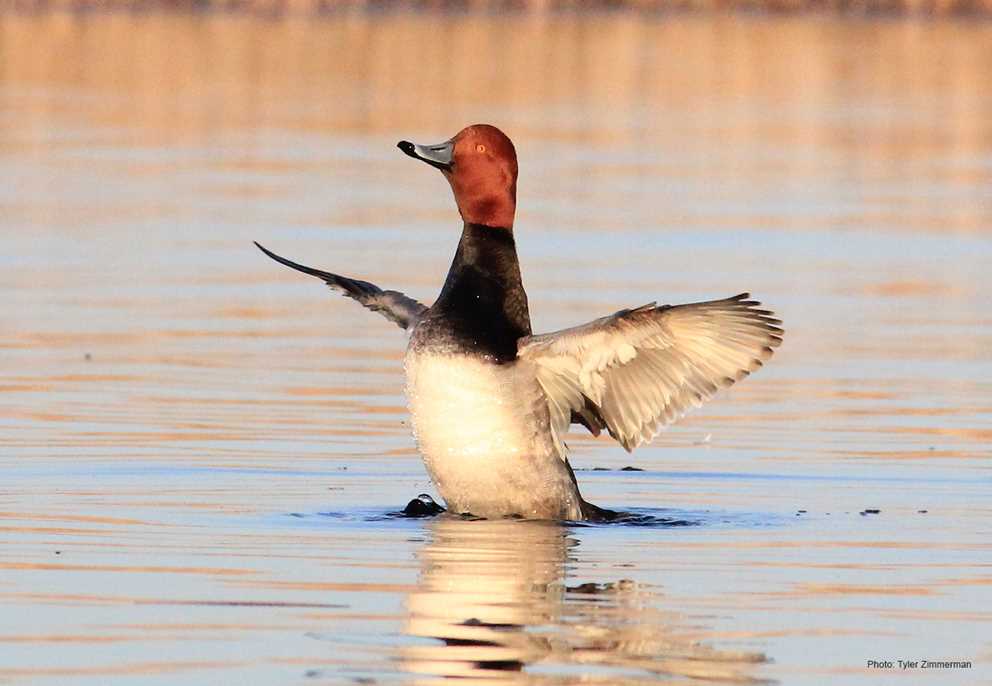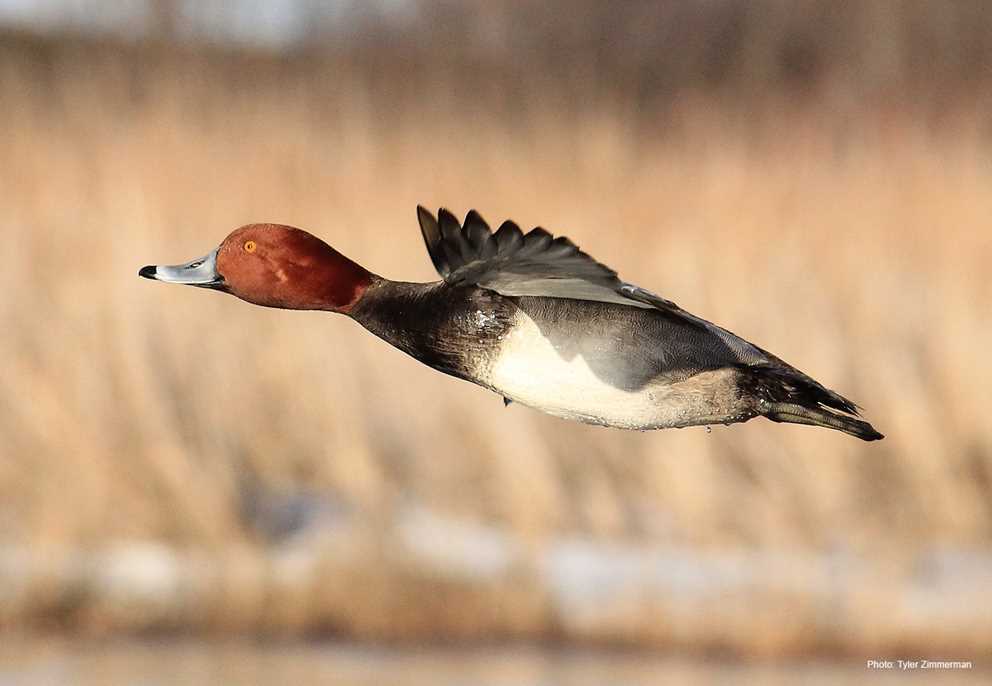Overview
The Redhead is a large diving duck found only in North America. Males are recognized by their chestnut-red head, steep forehead, and bluish-gray bill with a whitish band near the tip. The breast, lower neck, and upper back are black, while the back and sides are gray with fine silvery vermiculation. The belly is white. Females have brownish-gray bodies, buffy-brown heads, and white belly feathers. In flight, males display a gray back and upper wings, while females appear drab brown.
Redheads breed in semi-permanent freshwater wetlands in western Canada, Alaska, and parts of the Intermountain West of the United States. During migration and winter, they use large freshwater lakes, rivers, and coastal bays, including the Great Lakes. A significant portion (50-80%) of the population winters in Laguna Madre, a hypersaline lagoon along the coasts of southern Texas and northeastern Mexico.
Description
Key Identification Features:
- In flight, Redheads have steep foreheads and deep wing strokes, flying in loose flocks.
- Males feature a dark head and breast, with a gray back and wings.
- Females are drab brown, with a mottled body and buffy-brown head.
Male/Female Average Length and Weight
- Mass: Males 2.2 – 2.4 lbs.; Females 2.0 – 2.2 lbs.
- Wing Length: Males 9.1 – 9.3 in.; Females 8.7 – 8.9 in.
Male Identification:
- Alternate (Breeding) Plumage: Males have a chestnut-red head, black breast, and a steep forehead. Their bluish-gray bill features a white saddle near the tip and a dark gray tip. The iris is yellow-gold, and the back is gray with silvery vermiculation.
- Basic Plumage: Males molt into a dull brownish-gray coloration with a darker bill during the summer.
Female Identification:
- Alternate (Breeding) and Basic Plumage: Both plumages are similar, with brown-gray bodies, buffy-brown heads, and bluish-gray bills with light saddles. Females have white belly feathers. IThe iris is brown.
- Basic Plumage: Overall brownish-gray, with a white belly.
In-Flight Identification:
- Male: Displays gray wings and back with a steep forehead.
- Female: Appears drab brown with a similar steep forehead and mottled body.
Vocalizations:
- Male Calls: Males give a catlike “meow” or a soft “whee-ooohh” during courtship.
- Female Calls: Females emit a harsh “kerr kerr kerr” when in flight or taking flight.
Similar Species:
- Canvasback: Male canvasbacks have sloped foreheads, black bills, and red irises, compared to the steep forehead, bluish-gray bill, and yellow-gold iris of male Redheads. Females have the sloped forehead, and appear darker than Redhead females and lack the pale saddle on the bill.
Habitat Preferences
- Breeding: Found in deeper, permanent to semi-permanent wetlands within the boreal forest and Prairie Pothole region.
- Migration and Wintering: Redheads favor large water bodies such as the Great Lakes, rivers, and coastal bays, with a significant portion (50 to 80 percent) of the population wintering in Laguna Madre.
Foraging Habits and Diet
- Breeding Season: Breeding females feed heavily on invertebrates, especially aquatic insect larvae.
- Migration and Winter: Redheads rely mainly on plant materials (~80 to 90 percent), such as sago pondweed, wild celery, and delta duck potato. In Laguna Madre, they consume shoal grass.
Breeding Habits
- Monogamy: Redheads are seasonally monogamous, forming new pairs each spring.
- Nest Locations: Females build platform nests in emergent vegetation, such as cattail or bulrush, over water.
- Clutch Size: 7 to 8 eggs but due to brood parasitism clutch size may increase to 23 eggs. Some female Redheads are facultative brood parasites and lay eggs in nests Canvasbacks, other Redheads, and several other species, resulting in large clutch sizes. Other female Redheads lay only in their own nest and have average clutches of 7 to 8 eggs. Eggs are creamy white to pale olive, measuring 2.4 by 1.7 in. Average incubation period is around 25 days.
Migration & Distribution
- Fall Migration: Redheads depart breeding areas in October and arrive at wintering areas by mid-November. Peak winter numbers occur from mid-December to February.
- Spring Migration: Migration begins in February, with birds returning to breeding areas between mid-April and mid-May. Key spring staging areas include the Great Lakes and the Upper Mississippi River pools.
Conservation Status
- IUCN Status: Least Concern
- Population Status: Population estimates have ranged from 435,000 to 1,356,000 since the 1970s, with 2024 estimates at 782,000, consistent with the long-term average.
- Conservation Concerns: Habitat loss in the Prairie Pothole region and impaired water quality in wintering areas, particularly Laguna Madre, are key concerns.
- Conservation Focus: Conservation measures emphasize protecting Prairie Pothole wetlands and restoring critical migration and winter habitats, especially Laguna Madre.
Harvest Information
- An average of 120,764 redheads were harvested across the US during the 2019 through 2022 hunting seasons.
- Redhead harvest is typically highest in the Central Flyway, accounting for 40 to 50 percent of the total US harvest.
- The top three harvest states for redheads across the 2019 to 2022 hunting seasons were Texas (116,617), North Dakota (82,710), and Minnesota (38,248).
